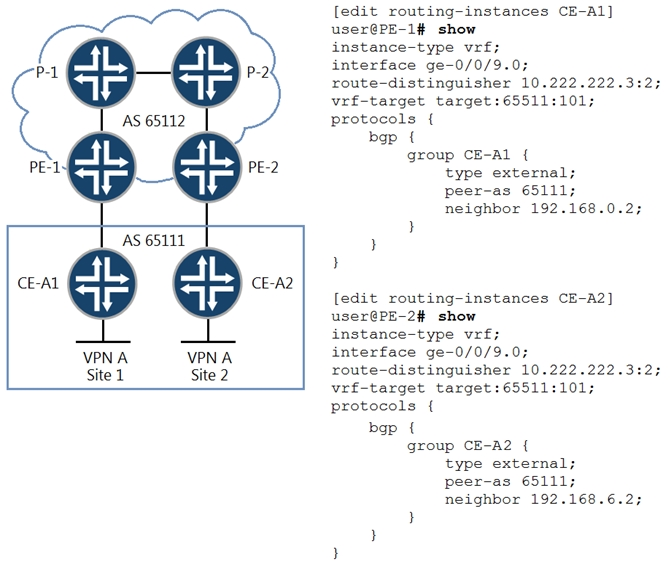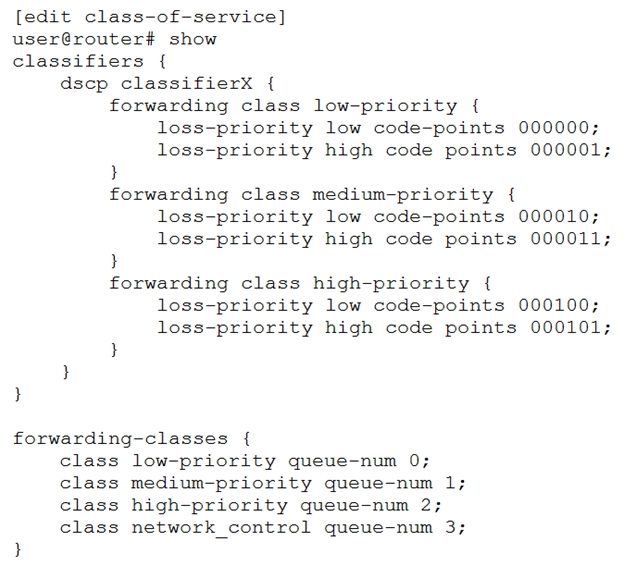
You notice an inconsistency between the routing table and the OSPF database, as shown in the exhibit.
What are two reasons for this behavior? (Choose two.)
- A. The LSA is a Type 4 LSA.
- B. An OSPF export policy is being applied to the route.
- C. An OSPF import policy is being applied to the route.
- D. The LSA is a Type 5 LSA.
Answer : BC

R2 is receiving the same route from R1 and R3. You must ensure that you can load balance traffic for that route.
Referring to the exhibit, which two configuration changes will allow load balancing? (Choose two.)
- A. Apply the prepend policy as an import policy under group R1.
- B. Configure multipath under the global BGP configuration.
- C. Configure multipath under group R1.
- D. Apply the prepend policy as an import policy under group R3.
Answer : AB

Referring to the exhibit, hosts in Site 1 and Site 2 are unable to communicate with each other through the Layer 3 VPN.
What is the problem?
- A. The two sites are in the same AS.
- B. The two sites are using the same instance type.
- C. The two sites are using the same route target.
- D. The two sites are using the same route distinguisher.
Answer : A

You manage an MX Series device which includes the configuration shown in the exhibit. Traffic marked with DSCP 000011 is entering the ge-1/0/4 interface at
102 Mbps. The traffic exits the device on the ge-1/0/5 interface. No other traffic is transiting the router.
In this scenario, what happens to traffic exceeding 100 Mbps?
- A. Traffic exceeding 100 Mbps is redirected to a rate limiter.
- B. Traffic exceeding 100 Mbps is buffered.
- C. Traffic exceeding 100 Mbps is dropped.
- D. Traffic exceeding 100 Mbps is forwarded.
Answer : C
What is the purpose of the cluster-list attribute within a BGP route reflector group?
- A. to disable internal cluster re-advertisements
- B. to facilitate loop detection within the route reflector network
- C. to define the router that first advertised the route to the route reflector
- D. to override the router ID value within the cluster
Answer : B

